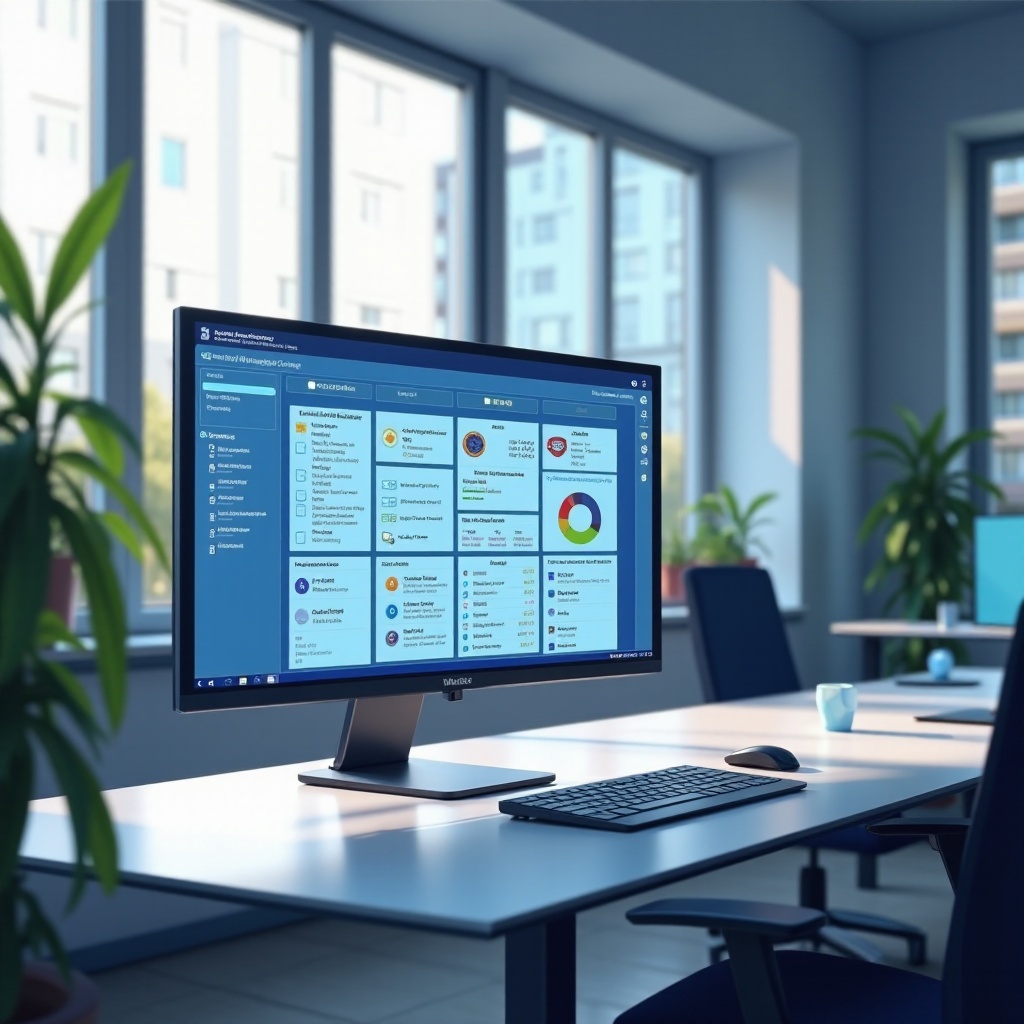A Modern Guide to Computer Management Without Local Users and Groups
Introduction
Struggling to manage computers within your organization efficiently and securely? Traditional methods that rely on local users and groups can often complicate administrative tasks, limit scalability, and present unforeseen security issues. Transitioning to more modern management methods offers greater control, improved security, and streamlined administration. This guide explores why managing computers without local users and groups is effective and dives into alternative management techniques and best practices for maintaining a secure and productive environment.

Understanding Computer Management and Local Users and Groups
Computer management involves overseeing the operations, access, and policies on different machine networks. Local users and groups have been a conventional approach to handle computer management traditionally. Local users are individual accounts created on each computer, while groups allow administrators to manage permissions for sets of users.
Although this traditional framework has been functional, it has its limitations, especially in large organizations. Each local user must be managed individually, leading to fragmented control and increased complexity. To tackle these limitations, it is crucial to understand and adopt more advanced and centralized methods.
Why Move Away from Local Users and Groups?
The transition away from using local users and groups is driven by several significant factors. Firstly, managing a large number of local users across multiple machines is inefficient and prone to human error. Ensuring updated settings and permissions for every user account can turn into an extensive administrative burden.
Secondly, security issues arise when using local accounts. With each local user, the potential for security breaches increases. Single points of entry make it easier for unauthorized users to gain access and disrupt systems.
Lastly, the scalability challenges posed by local user management make it difficult for expanding organizations. As businesses grow and diversify geographically, it becomes increasingly cumbersome to maintain a consistent management protocol across the entire network. Therefore, embracing centralized and more integrated management approaches is essential.
Alternative Methods for Computer Management
To address the limitations of local users and groups, consider the following alternative methods for computer management:
Active Directory and Domain Controllers
Active Directory (AD), a service developed by Microsoft, plays a pivotal role in managing network environments. It provides a robust, centralized database that holds information about all the network resources such as users, groups, and devices.
- Advantages:
- Centralized user management: AD allows administrators to manage all users and computers within a network from a single location.
- Enhanced security: Implementing group policies and permissions through AD enhances network security.
- Scalability: Whether you are managing a small network or an extensive one, AD provides the flexibility to scale as needed.
Domain Controllers (DCs) store AD data and provide authentication and authorization services. Using DCs means that IT administrators can ensure seamless access while maintaining a high level of security throughout the organization.
Cloud-Based Solutions - Microsoft Intune
As cloud computing becomes the norm, leveraging cloud-based solutions like Microsoft Intune for computer management presents numerous advantages.
- Features:
- Streamlines the process of managing devices, whether they are Windows PCs, Macs, or mobile devices.
- Offers remote management capabilities, making it easier to set up and configure devices from anywhere.
-
Provides dynamic compliance policies to ensure that all devices meet organizational standards.
-
Benefits:
- Accessibility: Manage devices from anywhere, reducing the need for on-site IT staff.
- Security: Intune's cloud-based management ensures that devices receive regular updates and security patches.
- Cost Efficiency: Reduces the need for physical infrastructure, lowering overall costs.
Using Group Policy Objects (GPOs)
Group Policy Objects (GPOs) are a powerful feature within Active Directory that help manage user and computer environments.
- Functionality:
- Apply policies to users and computers in bulk, ensuring consistency across the network.
-
Enforce security settings such as password policies, account lockout policies, and software restrictions.
-
Advantages:
- Consistency: Ensures that all users and machines adhere to the same policies, reducing the likelihood of misconfigurations.
- Control: Provides granular control over various system settings.
- Efficiency: Saves time and reduces configuration errors by applying changes uniformly across the network.
Automation Tools and Scripts
Automation tools and scripts significantly elevate the efficiency and consistency of computer management.
- Key Tools:
- PowerShell scripts: Enhance automation, allowing repetitive tasks to be executed quickly.
-
Configuration Management Tools: Solutions like Chef, Puppet, and Ansible help in automating deployment, configuration, and management tasks.
-
Advantages:
- Time-Saving: Automate repetitive and time-consuming tasks, freeing up IT personnel for more strategic work.
- Reduced Errors: Automation ensures precision and consistency, reducing human error.
- Scalability: Easily manage a growing number of devices without the need for proportional increases in IT staff.

Best Practices for Secure and Efficient Management
To maximize the benefits of moving away from local users and groups, adopting certain best practices is essential:
- Regular Audits: Conduct regular audits of user permissions and group policies to identify potential security gaps and areas for improvement.
- Compliance Policies: Ensure all devices comply with organizational security standards by implementing and enforcing compliance policies.
- Strong Authentication: Use multi-factor authentication (MFA) to bolster security, adding an extra layer of protection against unauthorized access.
- Continuous Training: Keep IT staff updated on the latest management tools and best practices. Encouraging ongoing education will prepare them for dealing with new challenges effectively.
- Documentation: Maintain comprehensive documentation for all processes and policies. This ensures that all staff members have access to the necessary information and can maintain consistency in practices.
Conclusion
Transitioning from traditional local users and groups to more modern computer management techniques can significantly enhance the security, efficiency, and scalability of your network. By understanding and utilizing tools such as Active Directory, Microsoft Intune, GPOs, and automation scripts, administrators can achieve a superior level of control. Following best practices ensures that these methods are effectively and securely implemented, paving the way for a smooth and secure computer management process.

FAQs
Frequently Asked Questions
What are the main benefits of not using local users and groups?
Moving away from local users and groups simplifies user management, mitigates security risks, enhances scalability, and streamlines administrative tasks.
How can Microsoft Intune assist in computer management?
Microsoft Intune offers cloud-based device management, allowing for remote configuration, dynamic compliance policies, and reduces dependency on physical infrastructure.
What are some best practices for secure computer management?
Best practices include conducting regular audits, enforcing compliance policies, utilizing strong authentication methods like MFA, continuous staff training, and maintaining comprehensive documentation.



